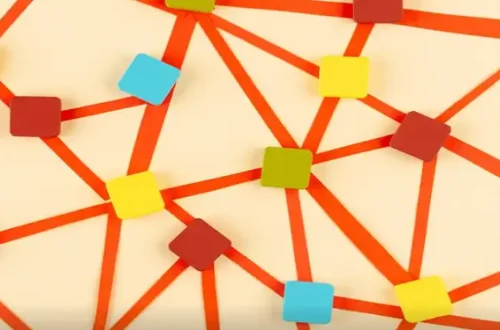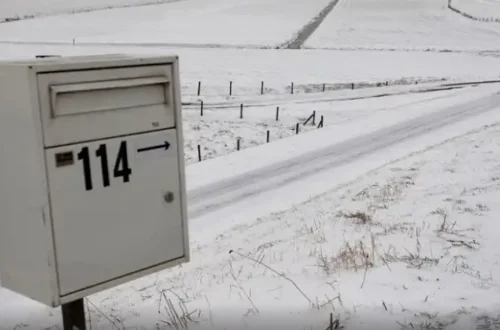The NYT Connections puzzle has become one of the most popular brain-teasers for those who love to challenge their thinking and problem-solving skills. A part of The New York Times daily puzzle offerings, NYT Connections requires you to group words or phrases into categories based on shared themes. While it may seem straightforward at first, as with any good puzzle, the challenge increases as the difficulty ramps up.
This article provides practical steps and hints to help you improve your approach to NYT Connections, increase your chances of solving it quickly, and most importantly, enjoy the process. Whether you’re a beginner or seasoned player, this guide offers helpful insights into solving the puzzle efficiently.
What is the NYT Connections Puzzle?
Before diving into tips and hints, it’s essential to understand the basic structure of the NYT Connections puzzle:
- Objective: Your goal is to find four groups of four words each, where each group has a shared theme or connection.
- How it works: You’re presented with 16 words. Using a process of elimination, logic, and pattern recognition, you need to categorize these 16 words into four groups of four. Each group shares a common connection that could be based on themes like animals, geography, pop culture, and more.
You’ll have to think critically, make educated guesses, and sometimes use trial and error to identify those connections.
Key Tips for Solving NYT Connections Efficiently
Here are some practical steps to help you improve your performance in the NYT Connections puzzle, along with hints that will sharpen your puzzle-solving strategy:
1. Start with Familiar Categories
A good first step is to look for obvious patterns and familiar categories. This will help you quickly group a few words and reduce the complexity of the puzzle.
Hints:
- Look for common categories such as colors, animals, countries, or famous personalities. These are common themes you’ll encounter.
- If the words are related to something pop-culture-related, like music, movies, or sports, look for any obvious names or titles that might give away the connection.
Practical Step:
- Scan the 16 words quickly and try to mentally group any words that stand out as obviously related to a specific theme. For example, if you see “Shakespeare,” “Hamlet,” “Romeo,” and “Macbeth,” you can be confident these belong to a literature category.
2. Eliminate the Impossible
If you can rule out one or two possible connections right away, the puzzle becomes easier. Sometimes, it’s not about finding the right groups immediately, but about eliminating incorrect ones.
Hints:
- Use a process of elimination to dismiss clearly incorrect connections. For instance, if you spot words that clearly don’t belong to certain categories (like mixing animals with types of music), you can confidently discard those pairings.
- Pay attention to words that don’t seem to fit with any other category. These are often the “odd one out,” and they’ll guide you towards the remaining groups.
Practical Step:
- Start with the word list and remove any words that stand out as having no clear connections with other words. This makes it easier to focus on the remaining possibilities.
3. Work with Word Lengths and Patterns
Sometimes, the number of letters in each word or the syllable structure can give clues about their categorization.
Hints:
- Group words that seem to have similar lengths or phonetic patterns. For example, short words might have a different connection compared to longer, more complex words.
- If a group of four words all share a similar syllabic structure, this could indicate a hidden link.
Practical Step:
- Look for patterns in how the words are formed. If you notice that four words seem to share a particular grammatical structure, they may belong in the same category.
4. Leverage Contextual Clues
Context can be a valuable tool when you’re trying to understand the relationship between the words. A single word could have multiple meanings, and context can help you focus on its relevant meaning for the puzzle.
Hints:
- Pay attention to the possible contextual meanings of each word. For example, a word like “Mercury” could refer to the planet, a chemical element, or the Roman god, depending on the other words surrounding it.
- Sometimes, words will be more connected to a historical or cultural context. If the other words seem to point toward a specific time period or geographical location, you can often guess the correct groupings.
Practical Step:
- After grouping a few words, try to interpret each word in different contexts. Once you understand the possible meanings, try to match them with the overall group theme.
5. Test and Re-test Your Groupings
If you’re unsure of the connections, don’t hesitate to test and re-test your groupings. This allows you to make mistakes without the fear of losing progress and refine your strategy as you go along.
Hints:
- Experiment with different combinations of words until you find the best-fitting groups. Sometimes a mistake will lead you to discover a new connection you hadn’t considered before.
- Use the process of “trial and error” to your advantage. Don’t lock yourself into one way of thinking too early—if a combination doesn’t make sense, change it up and try again.
Practical Step:
- Once you think you’ve grouped four words together, see if they make sense based on any external knowledge (such as culture, science, or history). If they don’t seem to fit, try another combination.
6. Watch for the “Harder” Connections
In many NYT Connections puzzles, there are one or two categories that are significantly harder to figure out than others. These are often more abstract or unusual connections.
Hints:
- The hardest categories typically involve more abstract relationships, such as words with multiple meanings, names from specific historical events, or scientific terms. Take your time on these.
- If you’re stuck, try grouping words based on less obvious characteristics. For example, words that might relate to specific literary devices or geographical regions might take longer to crack.
Practical Step:
- Once the easier groups are solved, focus your remaining efforts on deciphering the harder categories. Break them down into smaller word pairs or connections and work from there.
7. Use Online Resources (With Caution)
While solving the NYT Connections puzzle is about honing your skills, sometimes you might need a little help to push through. It’s okay to use online tools or ask for hints, but always try to solve the puzzle yourself first.
Hints:
- Online communities or forums dedicated to NYT puzzles can provide hints or explanations if you’re stuck. However, use them sparingly to avoid over-relying on outside help.
- Be sure to learn from the hints provided by others, as this can help you refine your understanding of the puzzle mechanics.
Practical Step:
- If you’re really stuck, you might consider visiting an online forum or a subreddit focused on NYT puzzle solutions for advice on challenging categories. But again, try solving the puzzle independently first for the best experience.
Final Thoughts: Keep Practicing
The more you practice solving the NYT Connections puzzle, the sharper your puzzle-solving skills will become. Each time you tackle a new puzzle, you’ll recognize new patterns, become more efficient at eliminating incorrect groupings, and improve your overall strategy.
By following the practical steps and hints above, you’ll gradually enhance your ability to solve even the most challenging NYT Connections puzzles. Keep practicing, enjoy the process, and remember: it’s not about how quickly you solve it, but about how much you learn along the way.
Happy puzzling!





